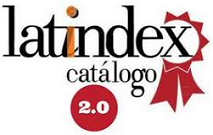Eficacia de la exclusión competitiva contra Salmonella Heidelberg en pollos de engorde
Palabras clave:
Exclusión competitiva, Microbiota compleja, SalmonellaResumen
Salmonella persists as one of the major sanitary and commercial hurdles in poultry production in Brazil. This bacterium can survive in the intestine of broilers and from there contaminate chicken carcasses in abattoirs, thus reaching consumers. This work aimed to evaluate the concept of competitive exclusion (Broilact) against a Salmonella Heidelberg strain that has been problematic in local poultry production. A total of 111 one-day-old male broilers Cobb 500 were housed in HEPA-filtered stainless-steel isolators and were manipulated exclusively from outside the containment box via gloves throughout the experiment. Animals were randomly sorted in three experimental groups: Negative control group (I1), Positive control group (challenged with salmonella) (I2) and Test group (salmonella challenge and competitive exclusion treatment - Broilact) (I3). The challenge strain was UFPR1, isolated from a chicken carcass in the south of Brazil and was administered orally with 107 CFU in 200 µl of saline solution at third day of age. Salmonella caecal counts were determined on days 6, 9, 14, 21 and 28, enterobacterias caecal counts on day 9 and salmonella liver counts on days 14, 21 and 28 (8 birds were used at each sampling point). The data were analyzed by two-way ANOVA and Tukey’s post hoc test (P<0.05), salmonella counts were analyzed by Kruskal-Wallis test (P<0.05). The treatment was successful in reducing caecum colonization by day 28. By the end of the experiment the treatment group had eliminated most of the salmonella. The average infection factor (IF, Log10 cfu/g) for the treatment and control group were 0.33 and 9.07 respectively (ΔIF of 8.7). This difference was statistically significant (P<0.05). Liver infection with salmonella could only be detected at day14 in non treatment group (7.93 log10 CFU/g). Enterobacteria counts were also significantly (P<0.05) lower for the treatment group, this is a secondary measurement of efficacy for the treatment. In conclusion, under the conditions of the present trial, a single dose of Competitive Exclusion (Broilact) effectively reduced bacterial colonization of broiler caeca with Salmonella Heidelberg with a ΔIF 8.7 logs at 25 days post-infection. A possible mechanism for this could be via the significantly reduced enterobacterial colonization also induced by the treatment.
Descargas
Publicado
Cómo citar
Número
Sección
Licencia
Derechos de autor 2025 Sociedad de Medicina Veterinaria del Uruguay-Facultad de Veterinaria, Universidad de la República

Esta obra está bajo una licencia internacional Creative Commons Atribución 4.0.











